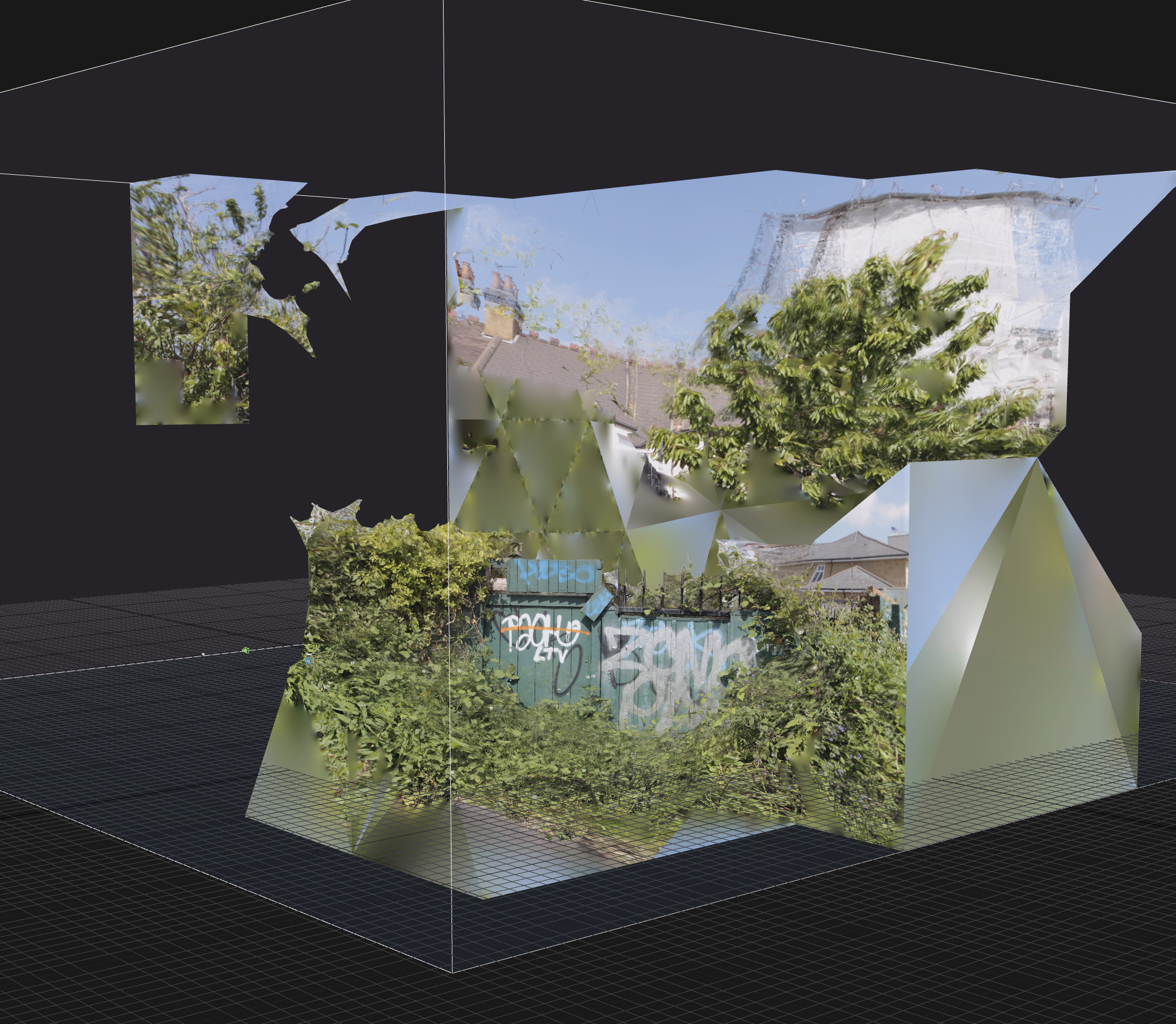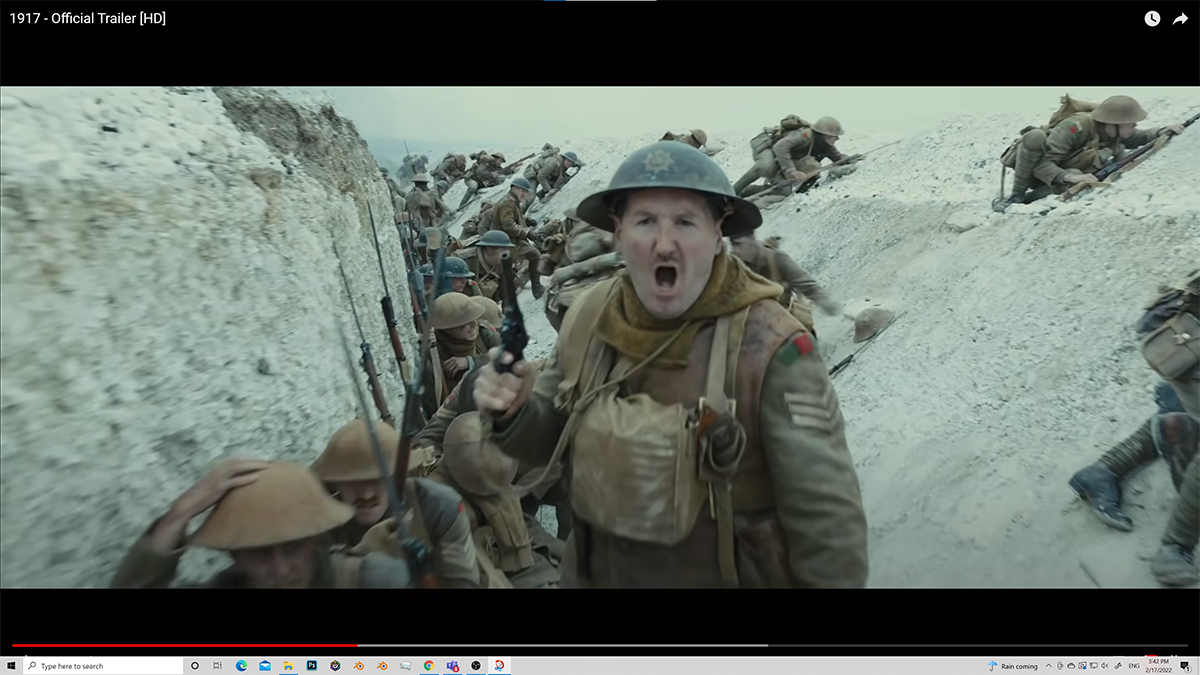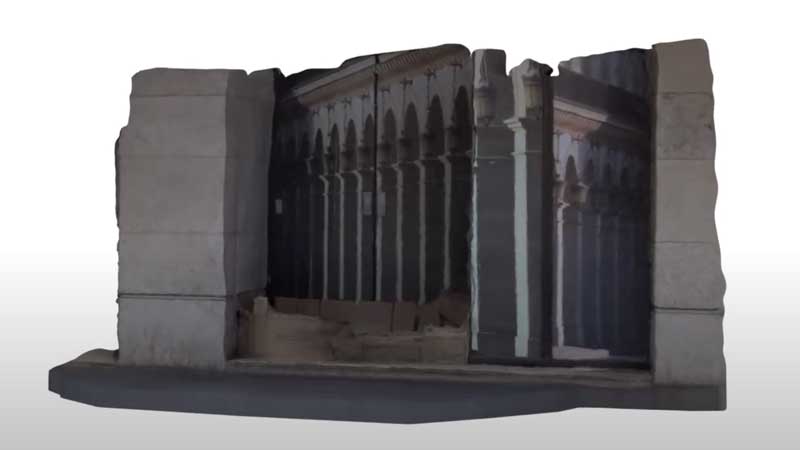Today I was thinking about the visual tension created by combining painting and sculpture. I can think of four different types of paintings/sculptures that I will like to reflect upon. It is important to mention that I am excluding from this analysis those sculptures that have a coating of paint meant to protect them or to give them a certain finish, those tinted by nature and also those with mirroring materials as I think they deserve a separate analysis.
1- The life-like physical sculpture
This is a pretty “straightforward” approach with no tension between painting and sculpture. it seems to me that artists use direct association as a starting point to develop their own ideas, I think most of the time these kinds of sculptures resemble “existing things” and in many cases are even made from living things. This is a very broad category that includes stuffed animals, war models, toys, replicas, store mannequins, wax models of celebrities and giant humans inside of a gallery. In this case, The resemblance of the piece (both texture and 3D shape) is the main ingredient and artists use it in many ways in order to achieve different results.
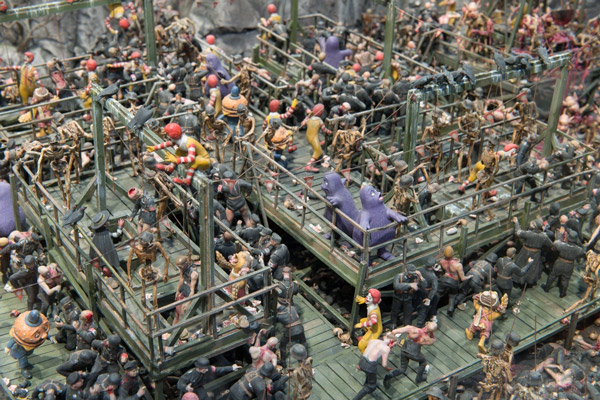
The Sum of all Evil
Jake and Dinos Chapman

Mask II
Ron Mueck
2- The realistic digital 3D model
Although this category might seem very similar to life-like physical sculpture, one has to acknowledge two important facts: first, this type of object is not constrained by the restrictions imposed by materiality i.e. expensive (at least compared when compared to marble, precious metals among others) and or scarce materials, scale, and physical decay, and second, that the surrounding context is usually digital (although AR is becoming increasingly popular). This category also splits into at least two subtypes, the digitally modelled object and the digital replica produced through photogrammetry. Of course, it gets a bit more complicated when you think about objects produced by combining these two processes. The important thing for me is that very often there is no tension between the image and 3D shape as “realistic” implies their shape and texture resemble things that could exist in real life.
3- The painted sculpture
These are pieces where the sculpture clearly acts as the dominant element and the depicted image rises as a subproduct that covers the surface, in my opinion, this is the most common and boring outcome. A common example of this would be embodied by the countless painted cows spread around the world, in this case, there is almost no tension between image and sculpture as the first is created to “enrich” the second.


4 – Functional and ornamental painted objects.
For me, these are the most interesting type of objects. Both image and shape convey meaning.
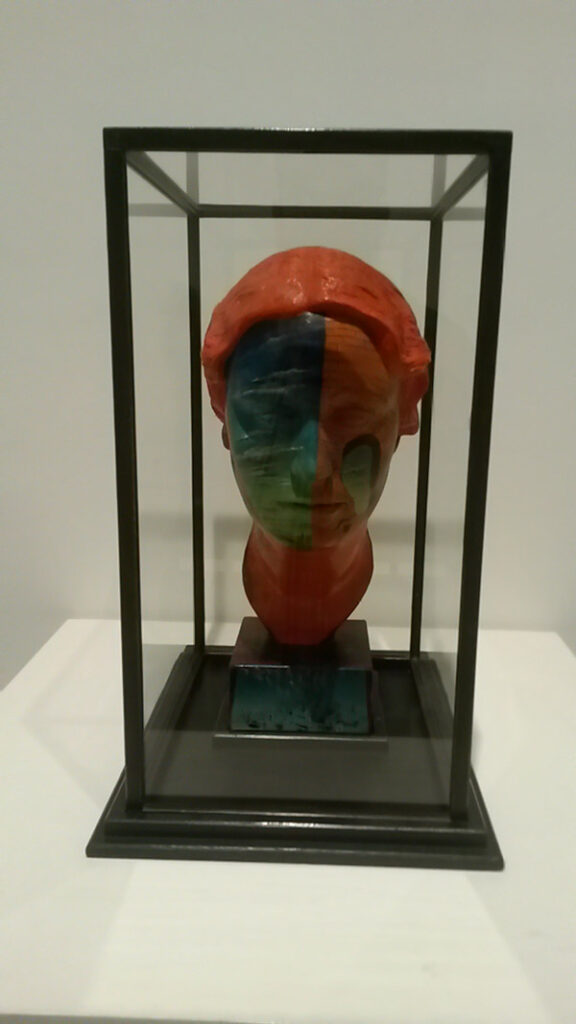
Portrait of Joella
Dalí intervention of a sculpture made by Man Ray
So a building has the shape of a building and it is covered by the image of a building. I also was thinking about my approach as For me the image tends to be the foundational element while the 3D form tends to adapt to it.
I am also thinking about the restrictions that a flat image imposes over a tridimensional form. But maybe this is just one of many approaches…
Anyway. it seems that this tension is actually a great asset for expression as it challenges the rules of physical reality.
So maybe I need to explore this tension between image and 3D form and how they are connected with anamorphic representation as it might be a fundamental characteristic embedded inside the modern visual culture.

